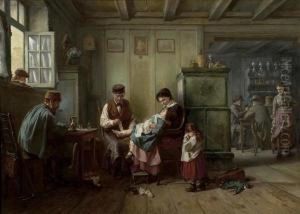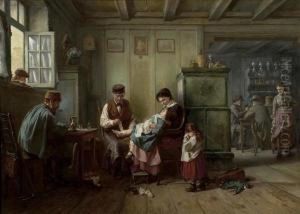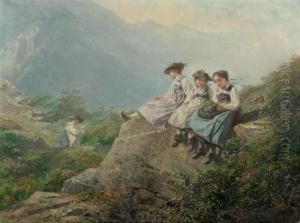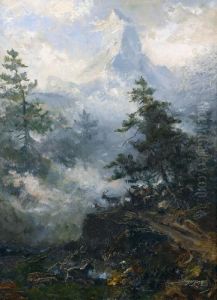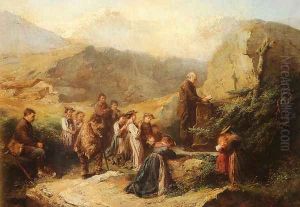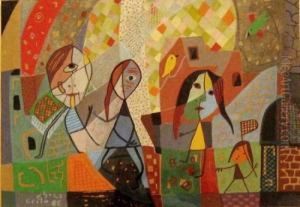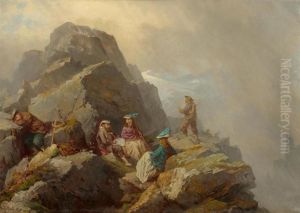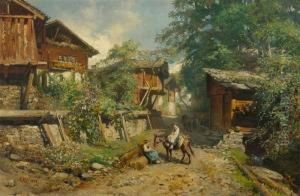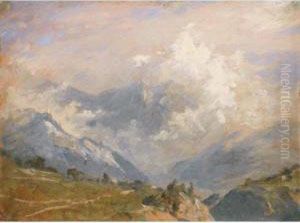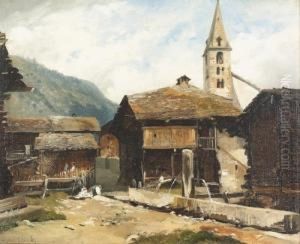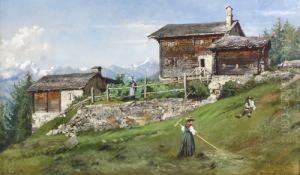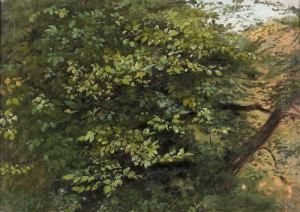Rafael Ritz Paintings
Rafael Ritz was a Swiss painter born on February 21, 1835, in the canton of Valais, in the small village of Naters. His artistic journey began in a rather isolated environment, far from the major European art centers of his time. Despite the geographical limitations, Ritz's passion for art was evident from a young age, and his talent soon transcended the confines of his rural upbringing. He initially received his artistic training locally, but his ambition and the desire to refine his skills led him to seek broader horizons.
In pursuit of professional development, Ritz traveled to Italy, a country renowned for its rich artistic heritage. This period was crucial in shaping his style and approach to painting. Immersed in the study of the Italian masters, Ritz absorbed the essence of the Renaissance and the then-contemporary movements, integrating these influences into his own distinctive style. His work began to reflect a blend of the meticulous detail characteristic of the Renaissance and the emerging sensibilities of the Romantic period.
Despite his promising career, Rafael Ritz's life was tragically cut short when he died at the age of 31 on December 12, 1866. His early death left the art world wondering about the potential unfulfilled creations that could have emerged from his evolving talent. Ritz's body of work, though limited, is celebrated for its contribution to Swiss painting during the 19th century. His landscapes and portraits are particularly noted for their vibrant realism and emotional depth, qualities that made his work resonate with audiences of his time and remain appreciated by art historians and collectors today.
Ritz's legacy is encapsulated in his contributions to the Swiss art scene, where he is remembered as a pioneer who bridged local traditions with broader European artistic movements. His life and work continue to inspire a sense of pride in the canton of Valais and among the Swiss people, serving as a testament to the impact that artists from even the most humble origins can have on the global stage of art history.

